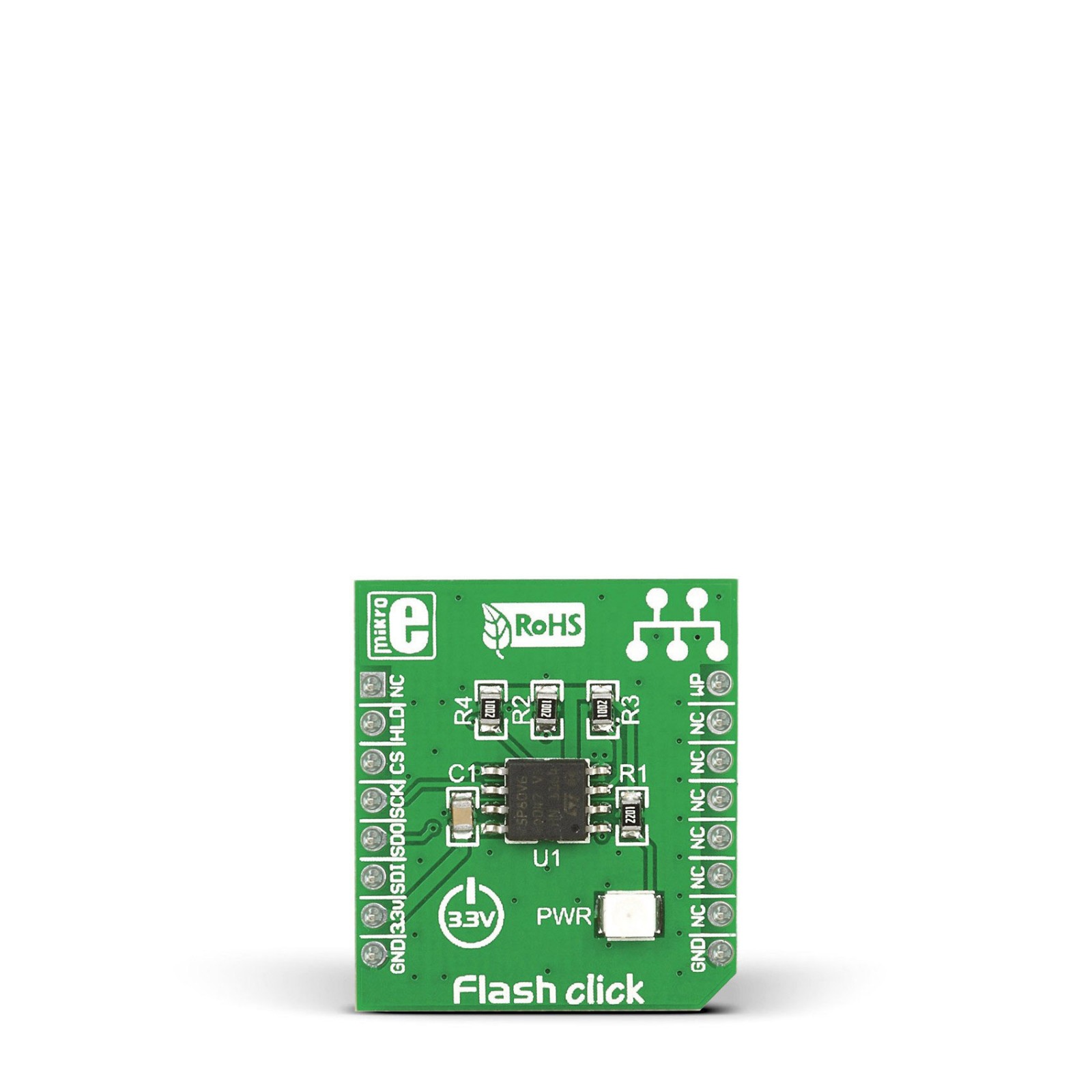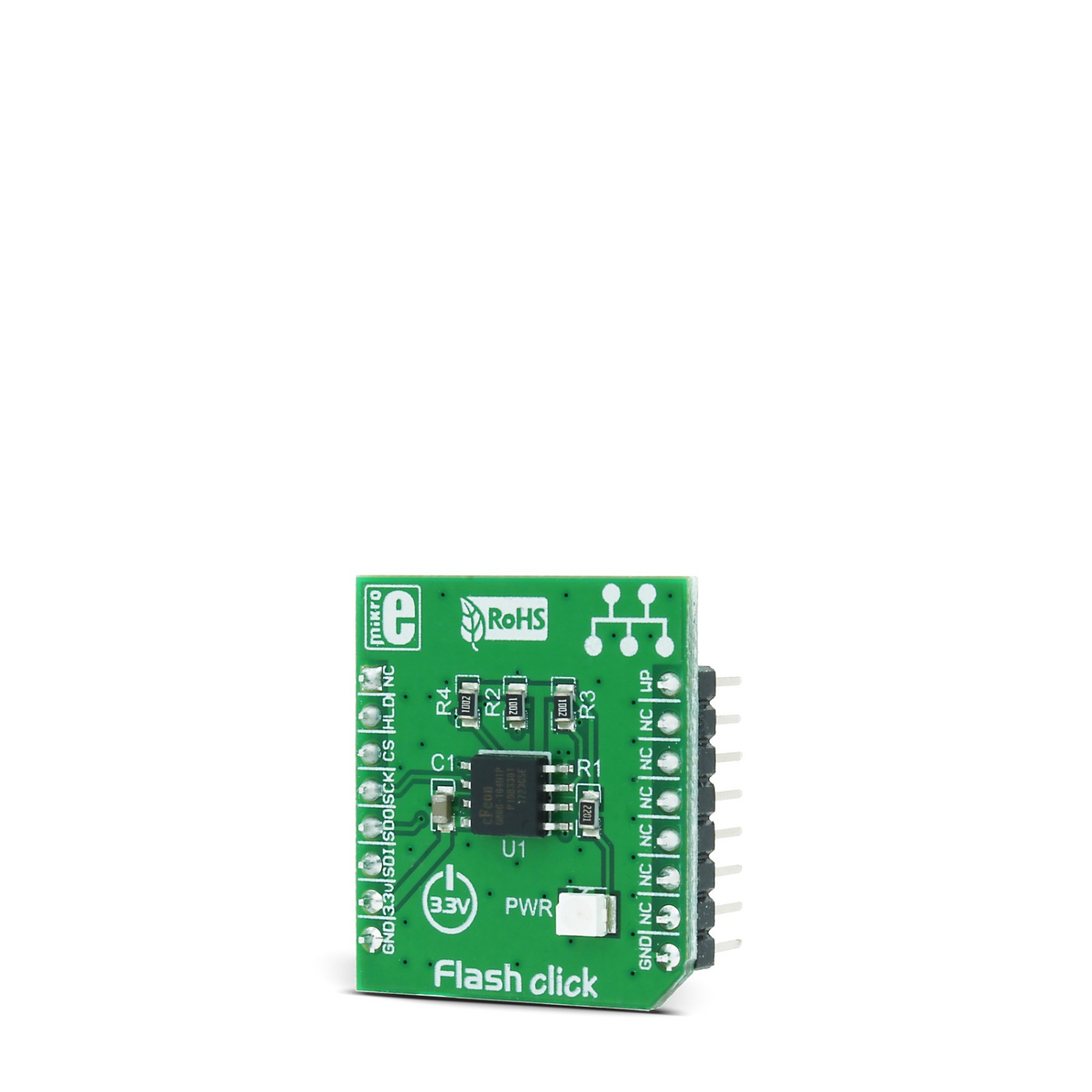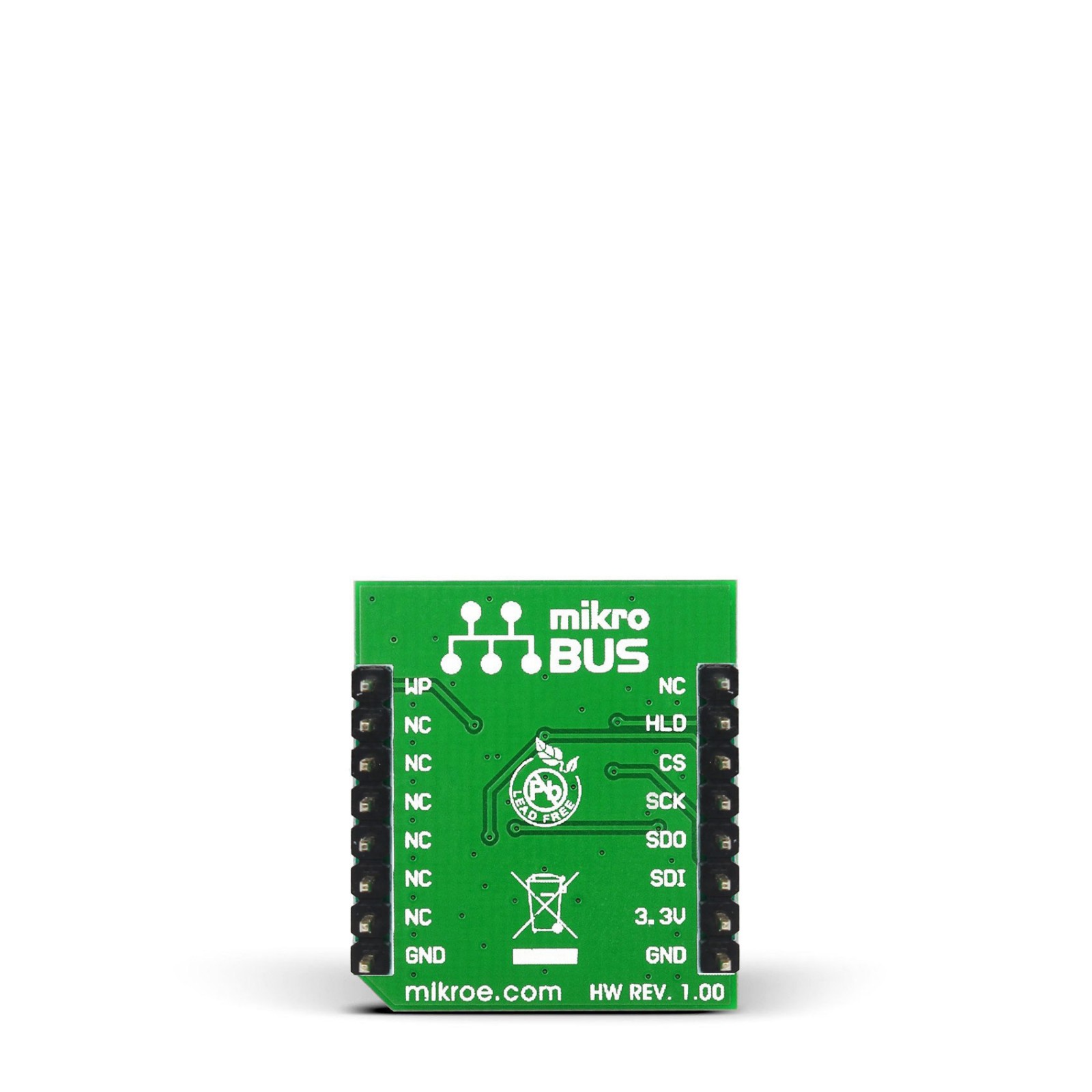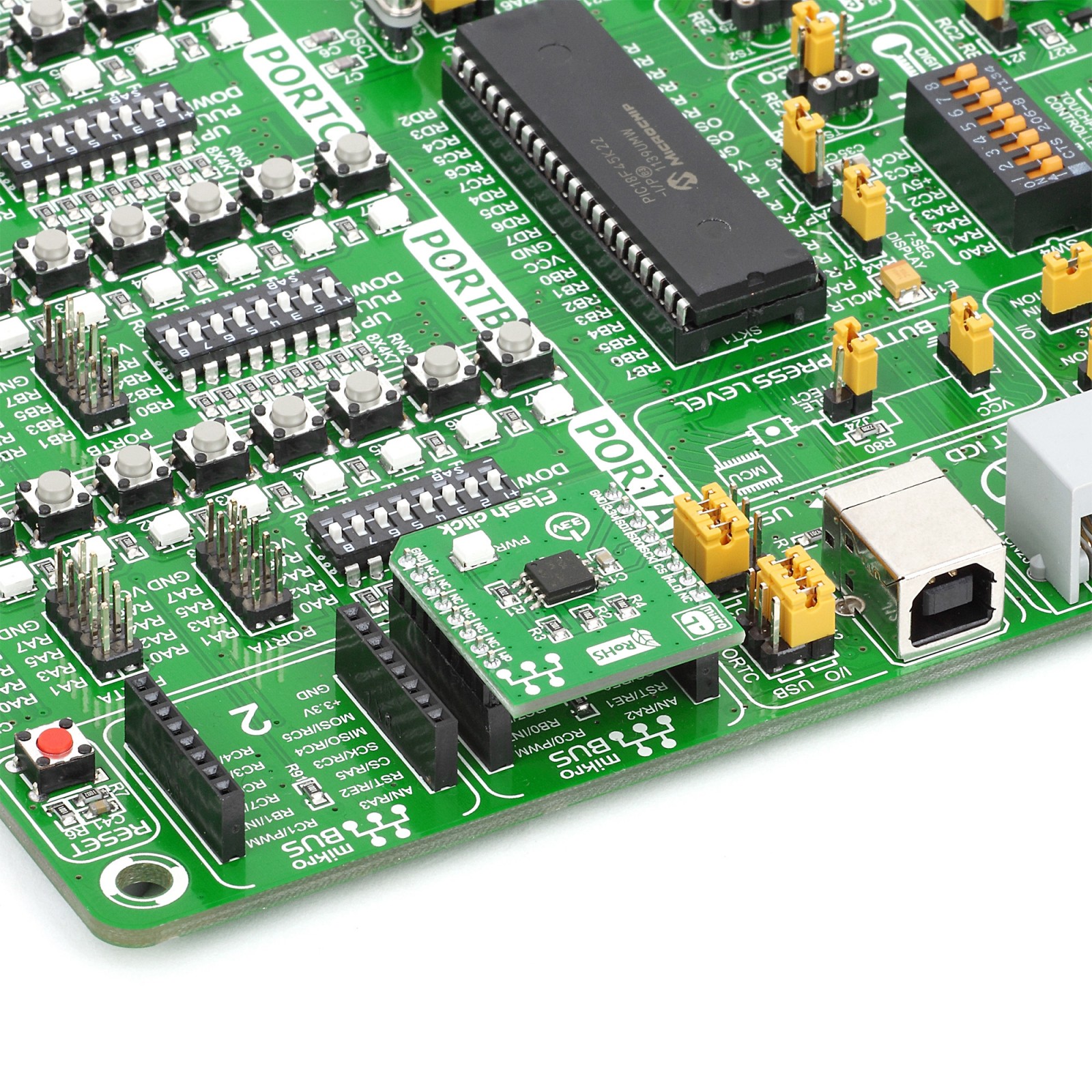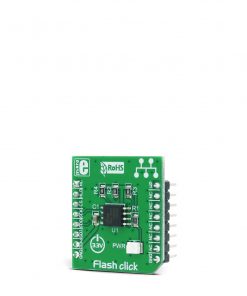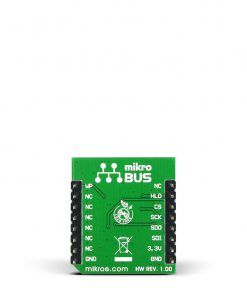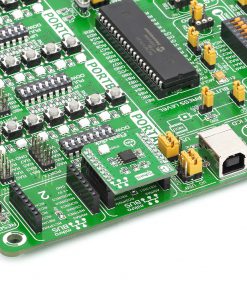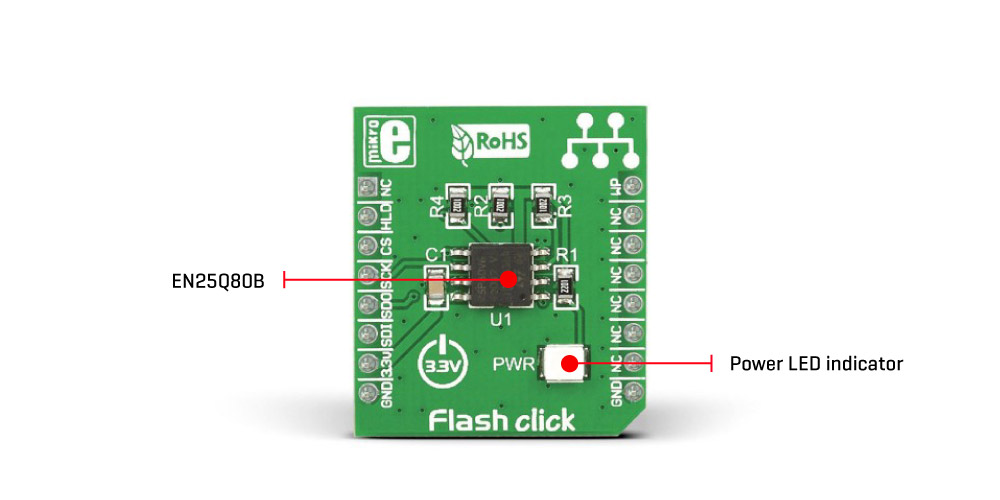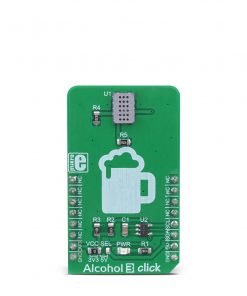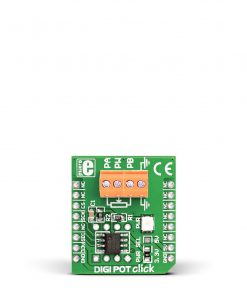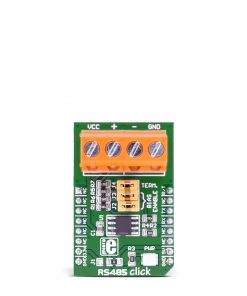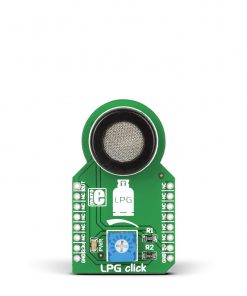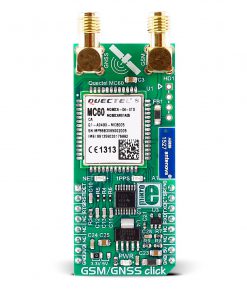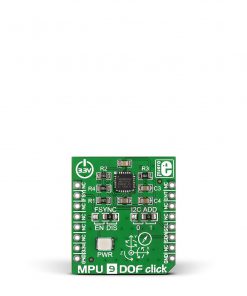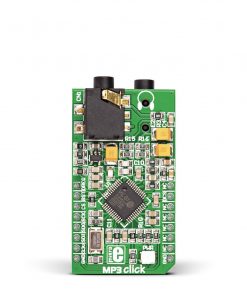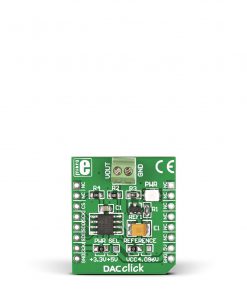Flash Click is a compact add-on board representing a highly reliable memory solution. This board features the EN25Q80B, a serial flash memory from EON Electric. The capacity of this flash memory is 8 Megabit (1MB) with 256 uniform sectors, 4KB each, and features advanced write protection mechanisms. The used flash IC has excellent endurance and can withstand up to 100,000 write cycles, with a data retention period of about 20 years. This Click board™ makes the perfect solution for developing storage and data transfer solutions for consumer devices and industrial applications.
Flash Click is supported by a mikroSDK compliant library, which includes functions that simplify software development. This Click board™ comes as a fully tested product, ready to be used on a system equipped with the mikroBUS™ socket.
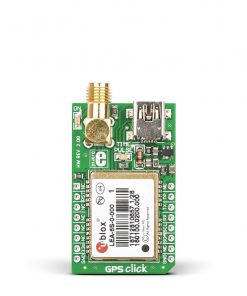 GPS Click
1 × R1,050.00
GPS Click
1 × R1,050.00 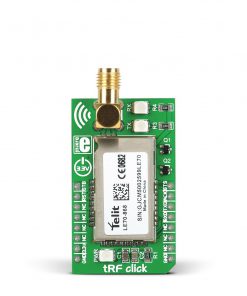 tRF Click
1 × R1,050.00
tRF Click
1 × R1,050.00 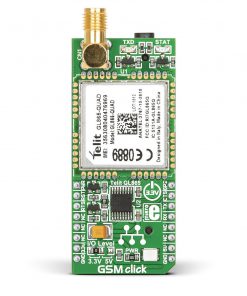 GSM Click
2 × R1,050.00
GSM Click
2 × R1,050.00 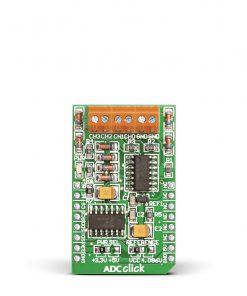 ADC Click
1 × R540.00
ADC Click
1 × R540.00 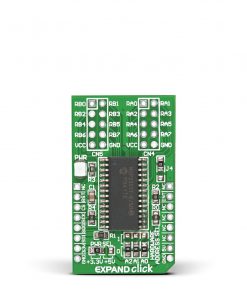 EXPAND Click
1 × R260.00
EXPAND Click
1 × R260.00 
